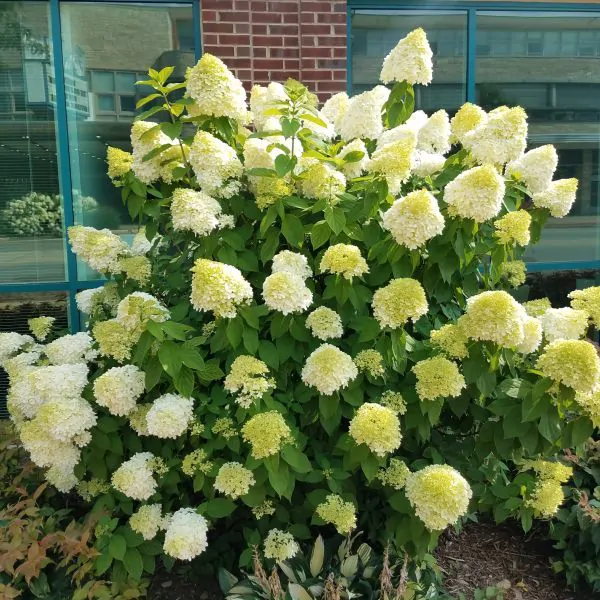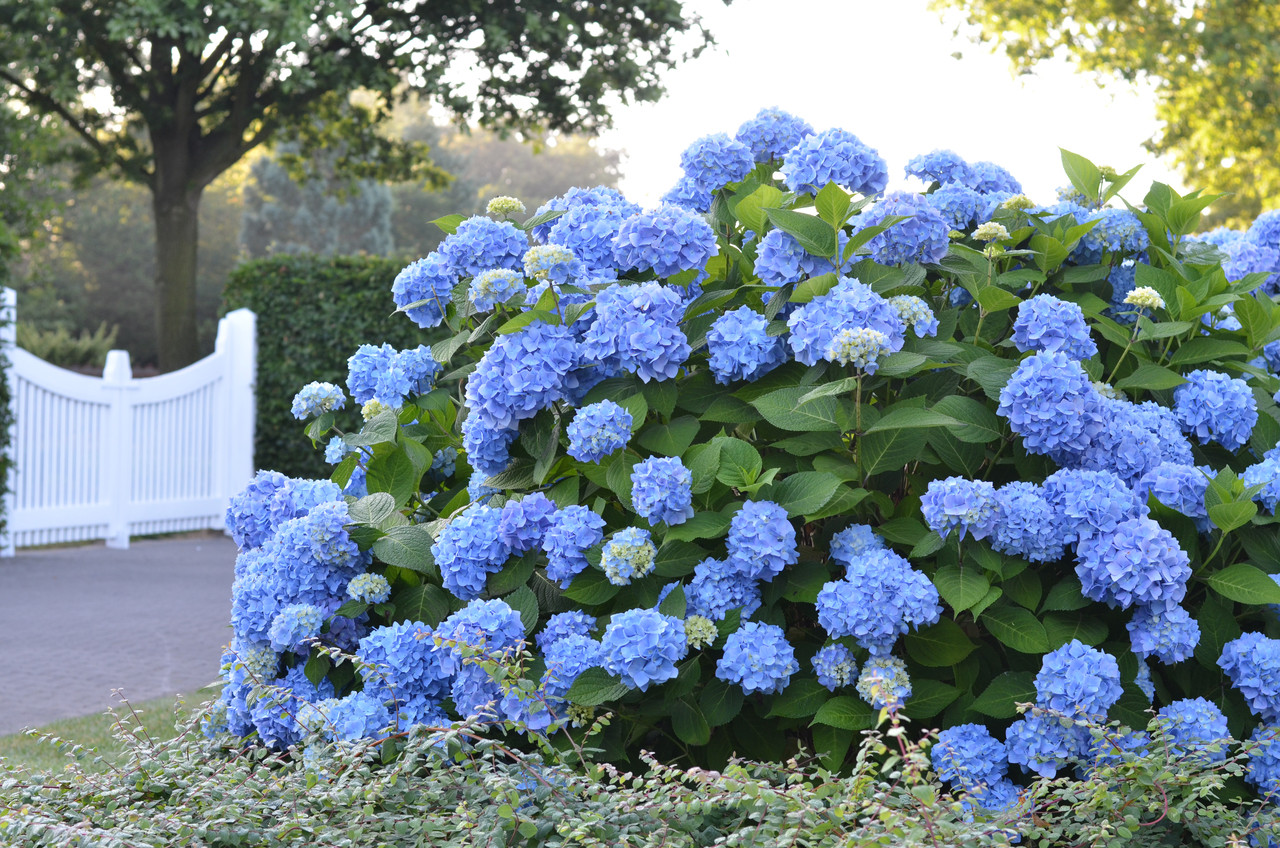The Ultimate Guide To Hydrangea Macrophylla Varieties
The Ultimate Guide to Hydrangea Macrophylla Varieties
Hydrangea macrophylla is a popular type of hydrangea that is known for its large, colorful blooms. There are many different varieties of hydrangea macrophylla, each with its own unique appearance and growing requirements.
In this guide, we will discuss the different types of hydrangea macrophylla, their care requirements, and how to choose the right variety for your garden.
What is Hydrangea Macrophylla?
Hydrangea macrophylla is a deciduous shrub that is native to Japan and China. It is a member of the Hydrangeaceae family, which also includes hortensias, snowball bushes, and oakleaf hydrangeas.
Hydrangea macrophylla can grow up to 6 feet tall and wide. It has large, heart-shaped leaves that are green in the summer and turn red or orange in the fall. The flowers of hydrangea macrophylla are borne in large clusters that can be up to 12 inches in diameter. The flowers come in a variety of colors, including blue, pink, purple, white, and red.
Types of Hydrangea Macrophylla
There are many different types of hydrangea macrophylla, each with its own unique appearance. Some of the most popular varieties include:
- Mophead hydrangeas: These hydrangeas have large, rounded flower heads that are made up of sterile florets. The color of the flowers can vary depending on the pH of the soil. In acidic soil, the flowers will be blue, while in alkaline soil, the flowers will be pink.
- Lacecap hydrangeas: These hydrangeas have flat flower heads that are made up of both sterile and fertile florets. The sterile florets form a ring around the fertile florets, giving the flowers a lace-like appearance. The color of the flowers can vary depending on the pH of the soil. In acidic soil, the flowers will be blue, while in alkaline soil, the flowers will be pink.
- Mountain hydrangeas: These hydrangeas are a bit more rare than mophead and lacecap hydrangeas. They have small, bell-shaped flowers that are borne in clusters. The flowers can be blue, pink, or white.
Growing Hydrangea Macrophylla
Hydrangea macrophylla is a relatively easy plant to grow. It prefers full sun to partial shade and moist, well-drained soil. The plants are hardy in USDA zones 5-9.
To care for hydrangea macrophylla, water the plants regularly during the growing season. Fertilize the plants in the spring with a balanced fertilizer. In the fall, prune the plants to remove dead or damaged branches.
Choosing the Right Hydrangea Macrophylla Variety
When choosing a hydrangea macrophylla variety, there are a few factors to consider. First, consider the size of the plant. Some varieties can grow quite large, so be sure to choose a variety that will fit in your garden space.
Second, consider the color of the flowers. Hydrangea macrophylla flowers can vary in color depending on the pH of the soil. If you want blue flowers, grow the plant in acidic soil. If you want pink flowers, grow the plant in alkaline soil.
Finally, consider the hardiness of the variety. Some varieties are more hardy than others. If you live in a cold climate, choose a variety that is hardy in your zone.
Conclusion
Hydrangea macrophylla is a beautiful and versatile plant that can add a touch of elegance to any garden. With so many different varieties to choose from, you are sure to find the perfect hydrangea macrophylla for your needs.
Hydrangea macrophylla is a popular garden shrub that is known for its large, colorful flowers. There are many different varieties of hydrangea macrophylla, each with its own unique characteristics. If you are interested in learning more about hydrangea macrophylla varieties, I recommend visiting . This website has a comprehensive directory of hydrangea macrophylla varieties, along with information about their flowers, growth habits, and care requirements.
In addition to providing information about hydrangea macrophylla varieties, also offers a variety of other resources for hydrangea lovers. You can find tips on how to plant, care for, and propagate hydrangeas, as well as inspiration for hydrangea-themed garden designs.
I hope you enjoy visiting !
FAQ of hydrangea macrophylla varieties
Q: What are the different types of hydrangea macrophylla?
A: There are many different types of hydrangea macrophylla, but some of the most common include:
- H. macrophylla
Endless Summer®: This variety is known for its long-blooming flowers, which can last for up to 6 months. The flowers can be blue, pink, or purple, depending on the soil pH. - H. macrophylla
Limelight: This variety has large, lime green flowers that bloom in late summer. It is a relatively low-maintenance variety that is resistant to pests and diseases. - H. macrophylla
Nikko Blue: This variety has large, blue flowers that bloom in late summer. It is a hardy variety that is tolerant of cold weather. - H. macrophylla
Pink Annabelle: This variety has large, pink flowers that bloom in late summer. It is a spreading variety that is perfect for borders or mass plantings. - H. macrophylla
PeeGee: This variety has large, lacecap flowers that bloom in late summer. It is a tall variety that is perfect for creating a focal point in the garden.
Q: How do I choose the right hydrangea macrophylla variety for my garden?
A: When choosing a hydrangea macrophylla variety, there are a few factors to consider, such as:
- The amount of sunlight your garden receives: Hydrangea macrophylla varieties need full sun to partial shade.
- The soil pH in your garden: The color of hydrangea macrophylla flowers is affected by the soil pH. In acidic soils (pH below 7), the flowers will be blue. In alkaline soils (pH above 7), the flowers will be pink.
- The size of your garden: Hydrangea macrophylla varieties can range in size from small shrubs to large trees. Choose a variety that will fit the space you have available.
- Your personal preferences: Consider the color of flowers you prefer, as well as the shape and size of the flowers.
Q: How do I care for hydrangea macrophylla?
A: Hydrangea macrophylla are relatively easy to care for. They need regular watering, especially during the summer months. They also benefit from a light application of fertilizer in the spring.
To encourage blue flowers, keep the soil pH below 7. To encourage pink flowers, keep the soil pH above 7.
Q: How do I propagate hydrangea macrophylla?
A: Hydrangea macrophylla can be propagated by taking cuttings in the spring or fall. To take a cutting, choose a healthy stem that is about 6 inches long. Cut the stem just below a node. Remove the lower leaves from the cutting, and then dip the cut end in rooting hormone. Plant the cutting in a pot of well-draining potting mix. Keep the potting mix moist, and the cutting should root in a few weeks.
Q: What are some common pests and diseases that affect hydrangea macrophylla?
A: Hydrangea macrophylla are susceptible to a few pests and diseases, including:
- Aphids: Aphids are small, sap-sucking insects that can damage hydrangea leaves. They can be controlled with insecticidal soap or neem oil.
- Scale: Scale insects are small, armored insects that can also damage hydrangea leaves. They can be controlled with horticultural oil.
- Leaf spot: Leaf spot is a fungal disease that can cause brown or black spots on hydrangea leaves. It can be controlled with a fungicide.
- Powdery mildew: Powdery mildew is a fungal disease that causes a white, powdery coating on hydrangea leaves. It can be controlled with a fungicide.
Image of hydrangea macrophylla varieties
- Mophead hydrangeas: These are the most common type of hydrangea macrophylla. They have large, rounded flower heads that can be up to 12 inches in diameter. The flowers are typically blue, pink, or white.
- Lacecap hydrangeas: These hydrangeas have flat flower heads with a lacy appearance. The flowers are typically blue, pink, or white.
- Mountain hydrangeas: These hydrangeas are native to Japan and Korea. They have smaller flower heads than mophead or lacecap hydrangeas, but they are more cold-hardy.
- Limelight hydrangea: This is a popular variety of mophead hydrangea that is known for its bright lime green flowers. The flowers eventually turn pink or blue, depending on the acidity of the soil.

- Endless Summer hydrangea: This is a popular variety of lacecap hydrangea that blooms twice a year. The first flush of flowers blooms in the spring, and the second flush blooms in the fall.

Post a Comment for "The Ultimate Guide To Hydrangea Macrophylla Varieties"